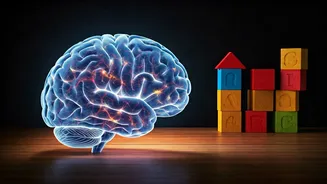Understanding Headaches
Headaches can manifest in numerous ways, making it essential to understand their different types and causes. Tension headaches, often described as a tight
band around the head, are usually triggered by stress or muscle tension and can be managed with rest and over-the-counter pain relievers. Migraines, on the other hand, are characterized by throbbing pain, often accompanied by nausea, sensitivity to light and sound, and can significantly impact daily activities. Cluster headaches are less common but extremely painful, occurring in cyclical patterns, often behind one eye. Recognizing these distinct types is the first step toward effective management and timely medical intervention when required. Awareness of these various headache types will help one understand their triggers and how to deal with each condition effectively.
When to Worry?
While most headaches are benign, certain characteristics signal a need for medical evaluation. Sudden, severe headaches, often described as a 'thunderclap headache,' could be a sign of a serious condition like a brain aneurysm or hemorrhage and require immediate attention. Headaches accompanied by fever, stiff neck, rash, confusion, seizures, vision changes, or neurological symptoms (like weakness or numbness) should be promptly assessed by a healthcare professional, as these can indicate infections or other underlying issues. Changes in headache patterns, such as an increase in frequency or intensity, are important. The same holds true if headaches begin after the age of 50 or worsen over time without any apparent trigger.
Red Flag Symptoms
Certain symptoms serve as critical red flags, demanding immediate medical attention. The appearance of a stiff neck alongside a headache can point to meningitis or other severe infections. Visual disturbances, such as blurred vision, double vision, or loss of vision, alongside a headache, may suggest conditions like glaucoma or increased intracranial pressure. Neurological symptoms, including weakness, numbness, difficulty speaking, or problems with coordination, indicate possible stroke or other neurological problems. Any headache following a head injury, especially if accompanied by loss of consciousness or vomiting, warrants immediate medical imaging to rule out serious injury. Recognizing these warning signs is crucial to ensure prompt diagnosis and treatment.
Seeking Medical Help
If you experience any red flag symptoms, or if your headaches are severe, persistent, or worsening, it is vital to consult a doctor. A detailed discussion about your headache history, including frequency, duration, location, and associated symptoms, will aid diagnosis. The doctor will likely conduct a neurological exam to assess reflexes, coordination, and cognitive function. Further investigation may involve blood tests, imaging scans such as CT scans or MRI, and, if needed, a lumbar puncture to rule out specific conditions. Early and accurate diagnosis is the key to an effective treatment plan, which could involve medication, lifestyle adjustments, or other therapies. It's essential to communicate openly and honestly with your healthcare provider.
Preventive Measures
While not all headaches can be prevented, certain lifestyle changes can reduce their frequency and severity. Staying hydrated by drinking enough water throughout the day is crucial, as dehydration can trigger headaches. Maintaining a regular sleep schedule and ensuring adequate sleep duration also plays a significant role in headache prevention. Managing stress through techniques like yoga, meditation, or deep breathing exercises can reduce tension headaches. Avoiding known triggers, such as certain foods, caffeine, or alcohol, can help prevent headaches for those with specific sensitivities. Additionally, regular exercise can improve overall health, reduce stress, and decrease headache frequency. Making these proactive efforts can substantially contribute to managing headaches and improving your overall well-being.


